
The red underwing is a moth of the family Erebidae. The species was first described by Carl Linnaeus in his 1767 12th edition of Systema Naturae.

Mormo maura, the old lady or black underwing, is a species of moth of the family Noctuidae. The species was first described by Carl Linnaeus in the 10th edition of his Systema Naturae. It is found in the Palearctic realm, from north-western Africa through all over southern Europe. It reaches its northern border in the west in northern Ireland and central Scotland, in central Europe, in northern Germany and Poland. In some Nordic countries, there are single finds. The other occurrence areas include Turkestan, Anatolia, the Middle East and Iraq. The name "old lady" refers to the fact that the wing pattern was said to resemble the shawls worn by elderly Victorian ladies.
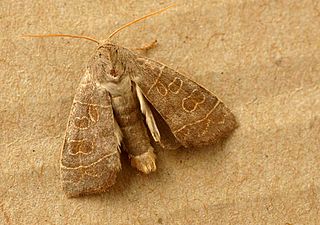
Ipimorpha subtusa, the olive, is a moth of the family Noctuidae. It is found in the Palearctic realm.

Hypena rostralis, the buttoned snout, is a moth of the family Erebidae. It is found in Europe far into Scandinavia.Then through the Palearctic into Asia Minor, the Caucasus and east to Siberia. It is widespread at forest edges, forest clearings, shore areas, in gardens, park landscapes and cultivated land and rises in the mountains up to 1600 m.
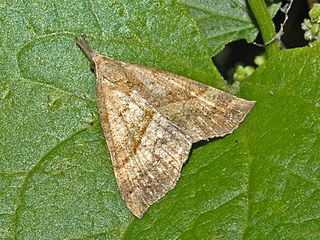
Hypena proboscidalis, the snout, is a moth of the family Erebidae. The species was first described by Carl Linnaeus in his 1758 10th edition of Systema Naturae.
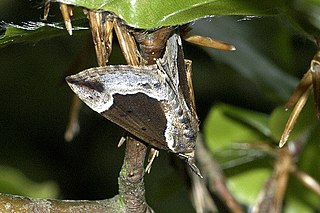
Hypena crassalis, the beautiful snout, is a moth of the family Erebidae. The species was first described by Johan Christian Fabricius in 1787. It is found in Europe.
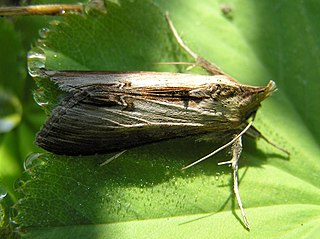
Cucullia asteris, or star-wort, is a moth of the family Noctuidae. The species was first described by Michael Denis and Ignaz Schiffermüller in 1775. It is found through the Palearctic including Japan.

Xanthia togata, the pink-barred sallow, is a species of moth of the family Noctuidae. It is a Holarctic species, and is found throughout Europe and east through the Palearctic to Central Asia, and Siberia up to the Ussuri. The distribution area includes the United States and Canada. It was first described by the German entomologist Eugenius Johann Christoph Esper in 1788 from the type specimen in Germany

Zanclognatha tarsipennalis, the fan-foot, is a species of litter moth of the family Erebidae. It is found in Europe and east across the Palearctic to Siberia, Amur, Ussuri, Japan, Taiwan, Korea and China.
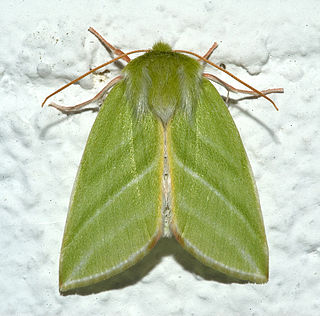
Pseudoips prasinana, the green silver-lines is a moth of the family Nolidae, common in wooded regions, and having a wingspan of 30–35 mm. It is found in the Palearctic realm.
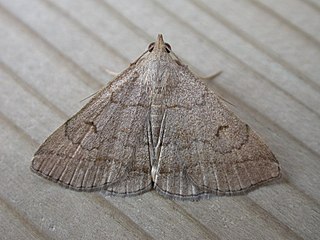
Zanclognatha lunalis, the jubilee fan-foot, is a moth of the family Noctuidae. The species was first described by Giovanni Antonio Scopoli in his 1763 Entomologia Carniolica. It can be found across the Palearctic realm.

Xanthia gilvago, the dusky-lemon sallow, is a moth of the family Noctuidae. The species was first described by Michael Denis and Ignaz Schiffermüller in 1775. It is found in Europe.

Synthymia is a genus of moths of the family Noctuidae. It contains only one species, Synthymia fixa, The Goldwing, which is found in southern Europe and North Africa.

Catocala nymphagoga, the oak yellow underwing, is a moth of the family Erebidae. It is found in Southern Europe, from Bulgaria up to the Iberian Peninsula and sometimes further north as a migrant. It is also found in North Africa and Asia Minor.

The Essex y is a moth of the family Noctuidae. It is found from Italy to Greece, southeastern Europe, southwestern Russia, the southern parts of the Ural, Africa, Canary Islands, Arabia, southwestern Asia, Ceylon, from India to Nepal, southeastern China and Japan.
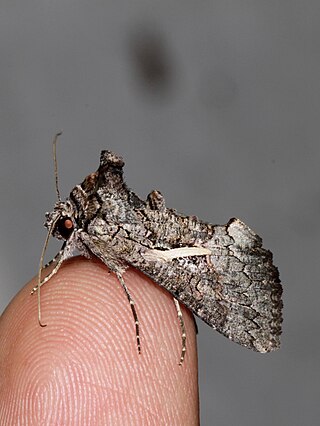
Ctenoplusia accentifera is a moth of the family Noctuidae. It is found in South-Western Europe, Greece, Africa, the Near East and Asia Minor.
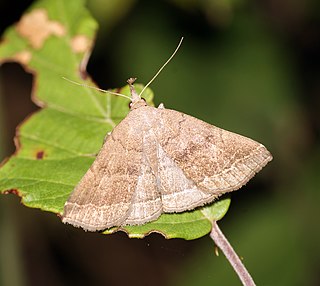
Polypogon plumigeralis, the plumed fan-foot, is a species of litter moth of the family Erebidae found in Africa, Asia and Europe. It was first described by the German entomologist Jacob Hübner in 1825.
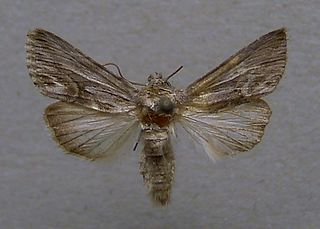
Calophasia platyptera, the antirrhinum brocade, is a moth of the family Noctuidae. The species was first described by Eugenius Johann Christoph Esper in 1788. It is found in Europe, the Near East, the western Sahara, Morocco, Algeria and Tunisia.

Lithophane furcifera, the conformist, is a moth of the family Noctuidae. The species was first described by Johann Siegfried Hufnagel in 1766. It is found from central Europe, east to the Black Sea region, the Caucasus and western Siberia. In the mountains, it is found up to elevations of 1,800 meters.

Pechipogo strigilata, the common fan-foot, is a moth of the family Noctuidae. It was described by Carl Linnaeus in 1758. It is found throughout Europe to the Urals then east across the Palearctic to Siberia, Amur, Ussuri, Korea and Japan.






















